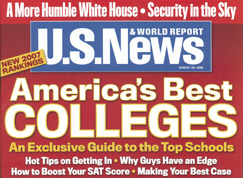
A large number of students visit websites or subscribe to magazines, which provide college rankings for each year, in their search for the most suitable college for them. Such rankings are meant to give students an opportunity to acquire factual information and objectively analyze colleges that they may apply to. However, it has recently been discovered that some colleges have been reporting false data in an attempt to be more highly ranked than they are supposed to be.
On April 17, Claremont McKenna College released a 28-page report written by O’Melveny & Myers LLP law firm about details regarding falsely reported SAT and ACT scores, high school class standing, and application data since 2005. According to news accounts, the vice president of Claremont McKenna College, Richard Vos, admitted that he had exaggerated freshmen SAT critical reading scores by an average of 17 points and the math scores by an average of 10.5 points. This data weighed 7.5 percent of the annual Best Colleges rankings from the U.S. News & World Report, and the same inflated data have been given to the U.S. Department of Education, Western Association of Schools and Colleges, and many other publishers, including College Board and Peterson’s.
To make matters worse, Claremont McKenna College is not the only school that has falsified its data. According to www.collegesolution.com, Baylor University was discovered to be bribing its incoming freshmen to retake the SAT, even though students who have been admitted to Baylor had no need to retake the test. In the end, forcing admitted students to retake the SAT managed to improve the school’s average SAT score by ten points. www.collegesolution.com also points out that the full-time faculty percentage is another frequently altered data. Stanford University informed U.S. Department of Education that 54% of its faculty was full time. But at the same time Stanford University told the U.S. News & World Report that 99% of it was. The University of Pennsylvania reported to the government that 52% of professors were full-time, but on the U.S. News & World Report, the data reads 86%. Harvard’s full-time professor percentage is 83% on federal data, but on the U.S. News magazine, it is 93%.
These findings once again give a rise to a question that has been mentioned since the publication of Best Colleges ranking: whether it is credible or not.


Interesting news, I never knew this before! I think reformatting your article would be better for readers to follow. Also some quotes from students regarding their thoughts on the matter would have made the article stronger 🙂